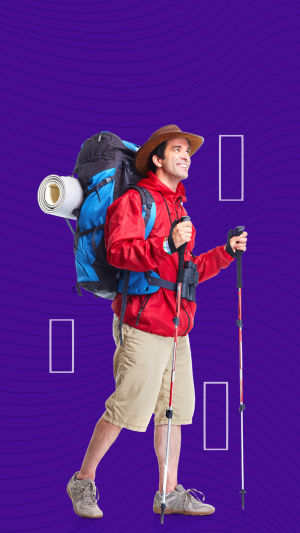Mountaineering is a popular sport for many reasons. It allows individuals to climb high and far, express emotions and ideas, and engage in fitness exercises while breathing fresh air and regulating their physical and mental states, which can help relieve work-related stress.
However, mountaineering is also a relatively professional sport that requires proper equipment and preparation. In addition to special backpackers or animal handlers who handle luggage and accommodations on established trekking routes and snow-capped mountains, those who venture into unexplored routes without established commercial environments or with limited support must carry their weight.
For such adventures, the following equipment is essential in order of importance based on the load:
1. Backpack
2. Shoes
3. Sleeping bag, moisture-proof pad, and tent
4. Rushing clothes and pants
If budget is a concern, it is best to invest in these four items initially to ensure long-term use.
1. Backpacks
Most mountaineers and long-distance hikers use two backpacks. A small daily bag can accommodate mountaineering items required for a day trip, while a large-capacity backpack can accommodate overnight camping gear. For heavy loads, a large, heavy-duty backpack may suffice.
When choosing a backpack, it is important to consider the economy, applicability, and necessary factors such as the backpack system and rain cover. A properly chosen backpack can maximize storage space and reduce physical strain.
2. Shoes
High-quality mountaineering and hiking shoes are essential for reducing wear and tear, improving grip, enhancing weight capacity, facilitating better climbing, and protecting feet and joints from injury. When selecting shoes, it is important to consider the following criteria:
a. GORE-TEX uppers, Vibram soles, and high-top design
GORE-TEX fabric is widely used in outdoor products due to its waterproof, breathable, and windproof features, making it more breathable than general waterproof fabrics.
b. Suitable for long-distance use in various terrains and extreme weather conditions.
3. Sleeping bags, moisture-proof pads, and tents
Sleeping bags, moisture-proof pads, and tents are essential for providing comfort and protection during overnight camping. When selecting a tent, one must make a trade-off between protection (sturdiness), weight, comfort, and price. Two-layer tents are common, with the inner account being breathable but not waterproof and the outer account being waterproof but not breathable.
High-altitude down sleeping bags are preferable, with goose down being better than duck down due to its lighter weight and fewer space requirements. The amount of down filling should be around 700 for altitudes below 4000 meters, with a limit temperature of -5°C. For altitudes above 4000 meters, it is recommended to use a down-filling amount of over 1000g and a limit temperature of -15°C or above. Moisture-proof pads can be either foam or inflatable, with foam being more convenient for storage and light enough to carry while inflatable mats provide better-warming effects.
4. Rushing clothes and pants
A rash jacket, or hard shell, is necessary for dealing with bad weather outdoors. It should be waterproof, windproof, breathable, and able to resist scratches and tears.
By investing in proper equipment and preparation, mountaineers can safely and comfortably embark on exciting adventures while enjoying the many benefits that this popular sport has to offer.





